St Anne’s in Wet and Wonderful Copenhagen
About a year ago I was celebrating Sunday Mass for the Feast of the Assumption in St Anne’s English language parish in Copenhagen before celebrating the Baptisms of my great nephew and niece. The congregation was an interesting mix of Filipinos, local people, and younger people I presumed were tourists. One I noticed had a very tough-looking face, and a Ho Chi Minh T–shirt. I told them I was a Marist Father from NZ. After Mass he of the Ho Chi Minh T–shirt told me he was taught by the Marist Fathers in Dublin.
To get to Copenhagen I had travelled from Munich by rail, changed trains at Hamburg, and then the entire train rolled onto a ferry at the seaport of Puttgarden. We were all ushered up on deck and crossed the Baltic Sea to the Danish island of Lolland. It was fair weather on deck with a little wind, a crossing of less than an hour; but as the train approached Copenhagen rain started to fall.
I was met at the station by my brother-in-law who was to take me to the St Anne’s Church. The rain got heavier and heavier. We took a light rail train towards St Annes church, and then walked through the heavy rain with one small umbrella between us. Arriving at the parish house just after 11pm, we could not rouse the fathers to open the door, so we returned to the small flat where my family were staying. I had the luxury of a mattress on the laundry floor, and found that every piece of paper and much of the clothing in my suitcase was wet. Later I learned that September to November was the rainy season. I recently read that this year, 2011, there have been floods: the St Anne’s Church Hall was swamped and out of action for some weeks.
The Christian Church in Denmark is largely Lutheran; the Catholic community is tiny by comparison (one Diocese). The original mission by St Ansgar in the 10th century is honoured by the name of the Catholic Cathedral in Copenhagen. The Lutheran Reformation of 1536 expelled the Catholics until 1682 when the Roman Church was re-recognised, although conversion from Lutheranism was still illegal. However the Constitution of 1849 restored religious freedom for Catholicism and Judaism. Those who have seen the movie Babette’s Feast would get a good idea of traditional Danish Lutheranism which includes a large dollop of puritanism .
I stayed with the St Anne’s Community and was surprised to find they were Redemptorists. There were Danish priests and an affable Kuwait-born Indian, Fr Joe Thoms, who had perfect English and a fine singing voice. He was chaplain to the Filipinos, so was impressively multi-lingual. When we came in for the Baptisms he sang an Entrance Song. I stayed at the 100 year old monastery which was undergoing repairs at the time. The visitor’s room was the sacristy with an expanding couch.
The Church of St Anne, opened in 1938, has a beautiful interior, with a two-towered facade in antique Basilica style. There is a beautiful side altar to Our Lady of Perpetual Help (a Redemptorist standard), with carvings by Sculptor Axel Thielman from 1846, and four large altar panels backed in gold portraying the Birth of Christ, the Last Supper, a Pieta and the Ascension of Christ.
What caught my eye was a beautiful nine-panelled wooden structure with St Anne as the centrepiece cf Front Cover. This reflected the history of the church: it was St Anne’s Chapel from1897-1902, then the first St Anne’s Church 1903-1938, and the current Church built in 1938.

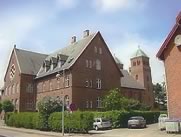
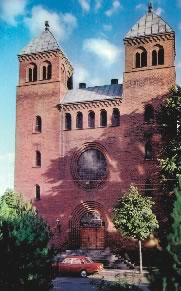
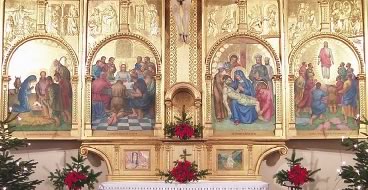
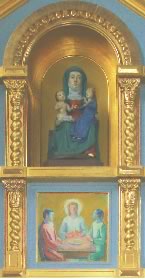
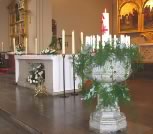
 Entries(RSS)
Entries(RSS)